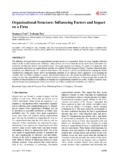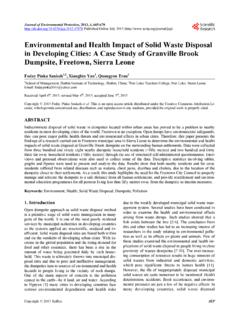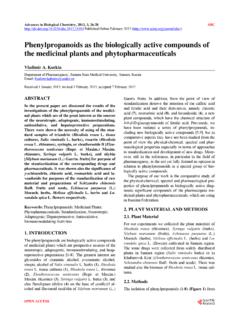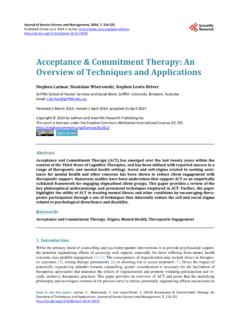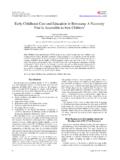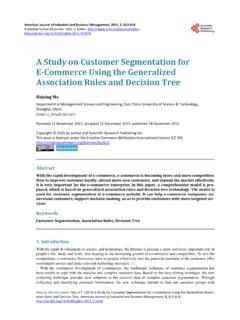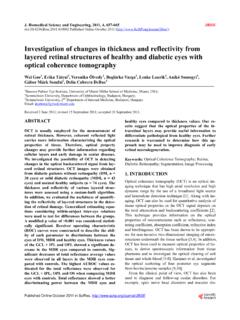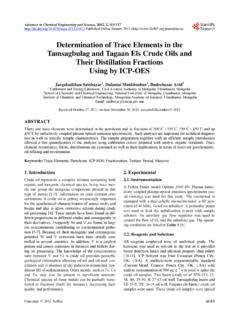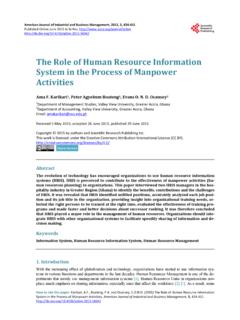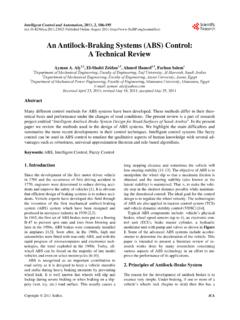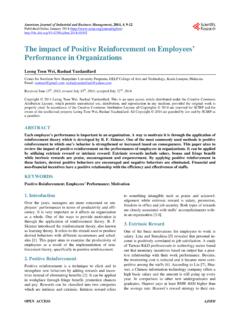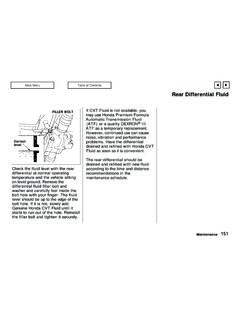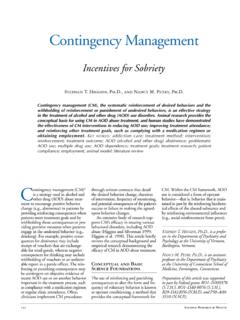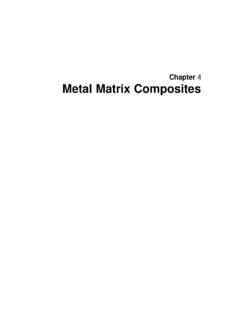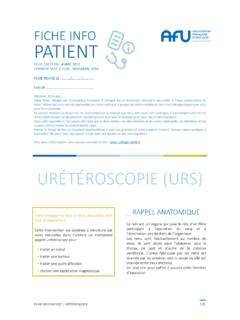Transcription of Classroom Management Strategies for Inclusive Classrooms
1 Creative Education, 2015, 6, 927-933 Published Online June 2015 in SciRes. How to cite this paper: Polirstok, S. (2015). Classroom Management Strategies for Inclusive Classrooms . Creative Education, 6, 927-933. Classroom Management Strategies for Inclusive Classrooms Susan Polirstok Special Education, Kean University, Union, NJ, USA Email: Received 22 April 2015; accepted 15 June 2015; published 19 June 2015 Copyright 2015 by author and Scientific Research Publishing Inc. This work is licensed under the Creative Commons Attribution International License (CC BY). Abstract Classrooms in the 21st century have by law become Inclusive , typically comprised of general edu-cation and special needs students.
2 Included students are those who present with mild to moderate learning and behavioral challenges. They add another layer of complexity to Classroom manage-ment, requiring teachers to be highly structured, consistent and reinforcing. Teacher fidelity to behavioral expectations that have been established for the Classroom is essential. Classroom Management Strategies discussed include changing the teacher approval to disapproval ratio, us-ing selective ignoring, focusing on structure and routine, increasing student locus of control, de-escalating student aggression and hostility, and limiting the use of punishment.
3 Hands-on Strategies are highlighted. Keywords Reinforcement, Punishment, Selective Ignoring, Locus of Control, Inclusion 1. Introduction Every teacher regardless of where they teach, what they teach, or who they teach, needs to be effective. Nothing less will do, especially in this era of increased accountability. Teachers must demonstrate depth of knowledge in the content area or areas that they will be expected to teach. After all, isn t this assessed by taking and passing standardized examinations for grade and subject matter that serve as requirements for teacher certification? While a given teacher could score highly on a certification examination that tests content knowledge, without a solid grounding in Classroom Management Strategies , the teacher s knowledge cannot be communicated effec-tively to students who are off-task and engaged in disruptive behaviors.
4 The common denominator that is most closely linked with effective teaching beyond academic content preparation is strong Classroom Management (Lemov, 2010). S. Polirstok 928 Most Classrooms of today are inclusion Classrooms which have a blend of students with special needs and general education students. The students with special needs in Inclusive Classrooms often present with mild to moderate learning and/or behavioral challenges. For students who might be identified as having learning disabil-ities, 45% of the time they also have an attention deficit and struggle with organization and executive function (DuPaul, Gormley, & Laracy, 2013).
5 Creating a learning environment for Inclusive Classrooms that is well ma-naged with clear structures and routines is of the utmost importance for student success (Wong & Wong, 2014). The Classroom Management Strategies that will be offered in this article are basic to any Inclusive Classroom . While tomes have been written on Classroom Management , the Strategies presented are often tied to creating points systems, requiring too much additional effort on the part of teachers to implement and maintain over time. Typically if we can get teachers to adopt such a strategy, they soon realize that the use of points systems re-quires a tremendous bookkeeping effort.
6 Further, the need to vary reinforcers and fund the purchase of these reinforcers presents additional challenges. Over time, teacher use of points systems will begin to wane because these systems can be burdensome and costly. Once the Management system begins to appear inconsistent, the students receive a clear message that violat-ing Classroom rules and norms may not be met with consequences with any consistency. This absence of consis-tency functions as a disinhibition effect and may contribute to students engaging in more inappropriate beha-vior over time to test the limits. For teachers, effective Classroom Management and the consistency that is re-quired are rooted in the statement say what you mean and mean what you say!
7 According to Wong and Wong (2014), consistency is an important key to success. 2. Creating a Reinforcing Classroom Environment Creating a climate conducive to students complying with behavioral expectations, volunteering answers or tak-ing on more challenging assignments is closely tied to the emotional temperature of the Classroom . Students need to know that if they take a risk and respond to a challenging question or assignment, they will be safe from criticism. School must be a safe and protected environment, where a student can come and learn without fear (Wong & Wong, 2014: p. 11). A Classroom where the emotional temperature is warm and congenial is a Classroom where students will be more willing to take on academic and/or behavioral challenges more willing to venture a bit outside their comfort zone.
8 How do we create this safe and emotionally warm environment? The answer is closely linked to the ratio of teacher approvals to disapprovals that occur throughout the day. In Classrooms where teachers are high approval (very reinforcing), they recognize appropriate behavior and acknowledge such acts verbally with a high degree of frequency. Research on the ratio of approvals to disapprovals emitted by teachers in a variety of Classroom settings indicates that most Classrooms are high disapproval (very punitive) (Polirstok & Greer, 1977). High disapproval teacher behavior over time can often serve to maintain high levels of inappropriate behavior.
9 On its face, this statement seems odd because being admonished should serve to lessen the frequency of inappropriate behavior. However, if students are accustomed to receiving negative feedback almost exclusively, providing such attention, serves to not only maintain the existing inappropriate behavior but may actually contribute to an increase (Scott, Anderson, & Alter, 2012). By issuing a disapproval immediately following an undesirable beha-vior, the disapproval can function not as an intended inhibitor of the problematic behavior, but inadvertently as a reinforcer. For students whose reinforcement history outside of school has typically been negative, they are likely to seek negative attention from their teachers.
10 Unwittingly teachers often find themselves caught in a cycle of mutually aversive behavior , the more the teacher tries to limit inappropriate behavior through the use of disapproval or punishment, the more the behavior surges or asserts itself. This cycle of interaction could be thought of as a dance of anger , which can continue to escalate over time. Such a cycle of interaction could create an environment where teachers and students may well engage in confrontational behaviors which can readily escalate into serious behavioral incidents. Class-rooms where the emotional temperature is hostile can be characterized by this dance of anger and teachers who are caught in such cycles leave at the end of each day emotionally drained.
